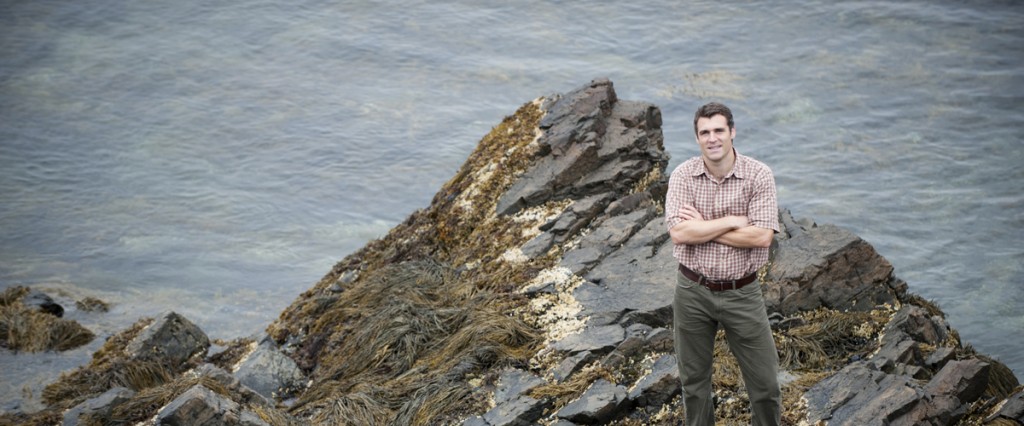by Gwen Schanker, Journalism and Biology, 2018

It is widely known that rising levels of atmospheric carbon dioxide are making the oceans more acidic. Less understood, however, is how much the oceans have actually changed since the Industrial Revolution, and what impact these changes have already had on creatures inhabiting the ocean. Associate Professor Justin Ries, a marine geologist in the Department of Marine and Environmental Sciences whose research focuses on the effects of ocean acidification on calcifying organisms, is looking to rock-forming ‘coralline’ algae to answer these questions.
Ocean acidification is caused by absorption of excess carbon dioxide from the atmosphere, which leads to a reduction in ocean pH—so called ‘ocean acidification.’ Although it is well-established that average seawater pH has declined since the Industrial Revolution—when humans started releasing large amounts of carbon dioxide to the atmosphere—it is less clear how the more extreme reaches of the ocean, like the very cold waters to the far north and south, have changed with time. Nor do we fully understand how such changes have impacted the organisms inhabiting these already extreme environments.
Ries’ current project, for which he was recently awarded a grant from the National Science Foundation, will examine chemical signatures within a unique type of rock-forming or ‘coralline’ algae that thrives in these lesser-examined high-latitude waters, in order to reconstruct the history of ocean acidification within these frigid waters. He will then compare this history of ocean acidification to annual growth layers within the coralline algae to investigate the impacts of past ocean acidification on cold-water organisms.
“From the core of a single algal colony, we can reconstruct both the history and biological impact of ocean acidification since the Industrial Revolution,” Ries said. Due to the algae’s unique ability to record seawater pH in the boron isotope composition of its skeletal bands, the team can go back more than 700 years to determine both the history and impact of ocean acidification before and after the Industrial Revolution.
“I hope to generate a detailed record of how high-latitude oceans have acidified since the Industrial Revolution, as well as a clearer picture of what baseline levels were like before we started releasing massive amounts of CO2,” Ries said.
The ultimate goals of the project are to expand knowledge about the causes and consequences of ocean acidification and to help policymakers make informed decisions on how to lessen the negative effects of ocean acidification on marine ecosystems. The team also plans to increase awareness of ocean acidification through a short documentary film.
The outreach should have both local and global impacts, as the research represents collaboration between faculty at Northeastern University, Claremont College in California, and the National Oceanography Center in Southampton, England. For Ries and his colleagues, the project and the grant represent an exciting challenge.
“It provides an opportunity to explore a part of the ocean that has been somewhat overlooked in ocean acidification research,” Ries said. “As a geologist, it’s always exciting to explore a new part of the world, and how global processes and cycles are evolving there.”
The team is looking for both graduate and undergraduate research assistants to participate in the project. If interested, please send a resume and a letter of interest to Ries at [email protected].

